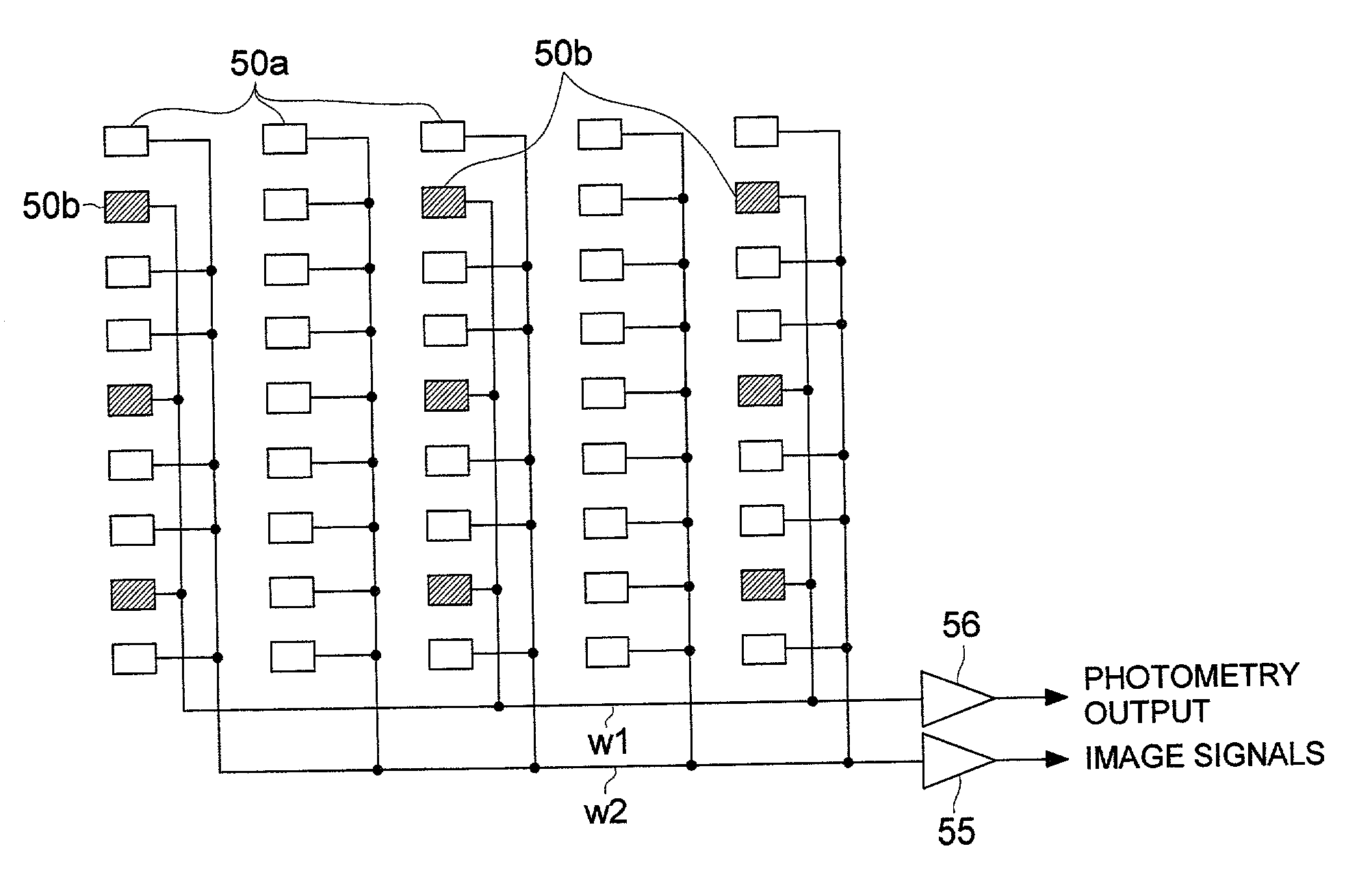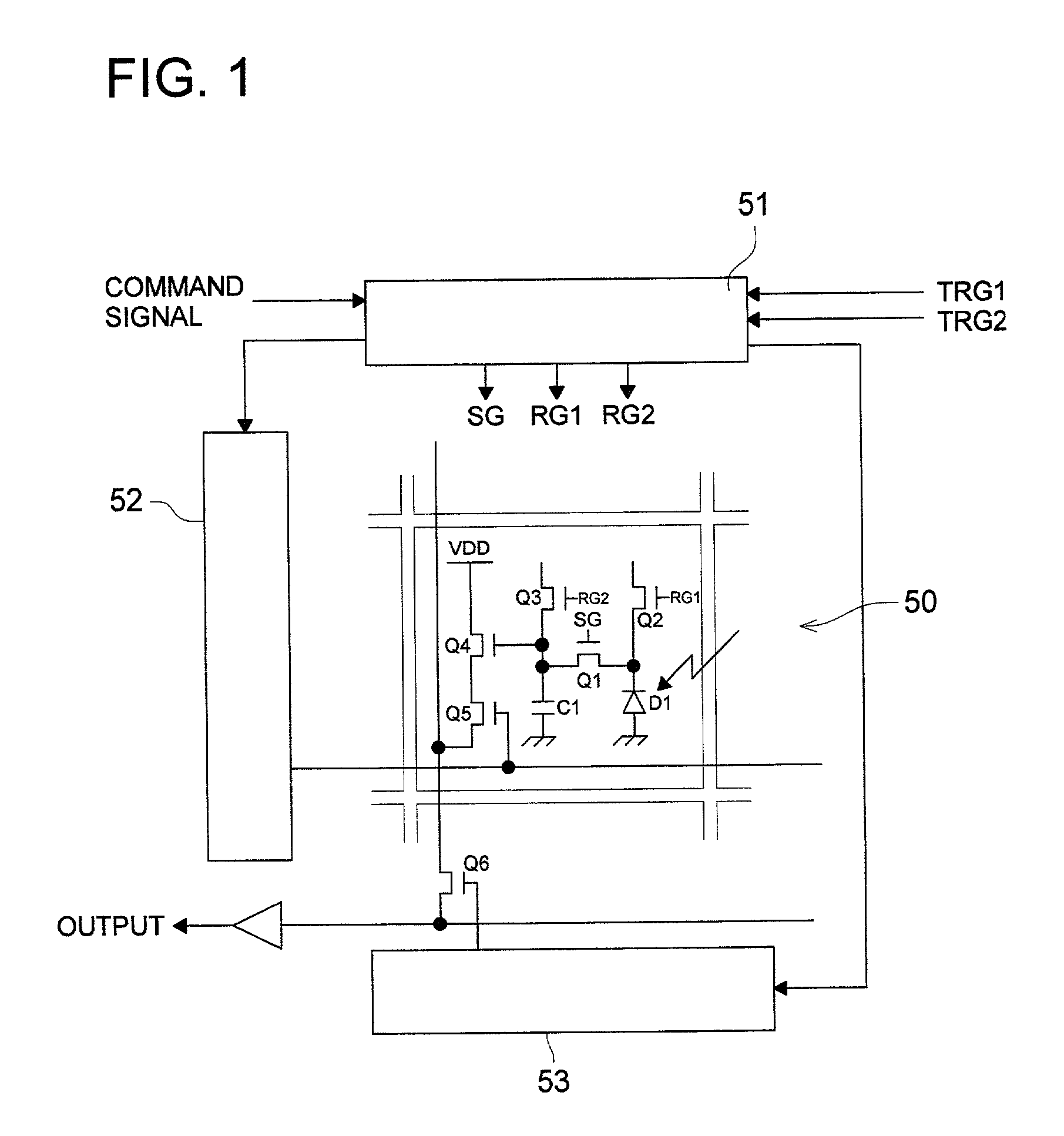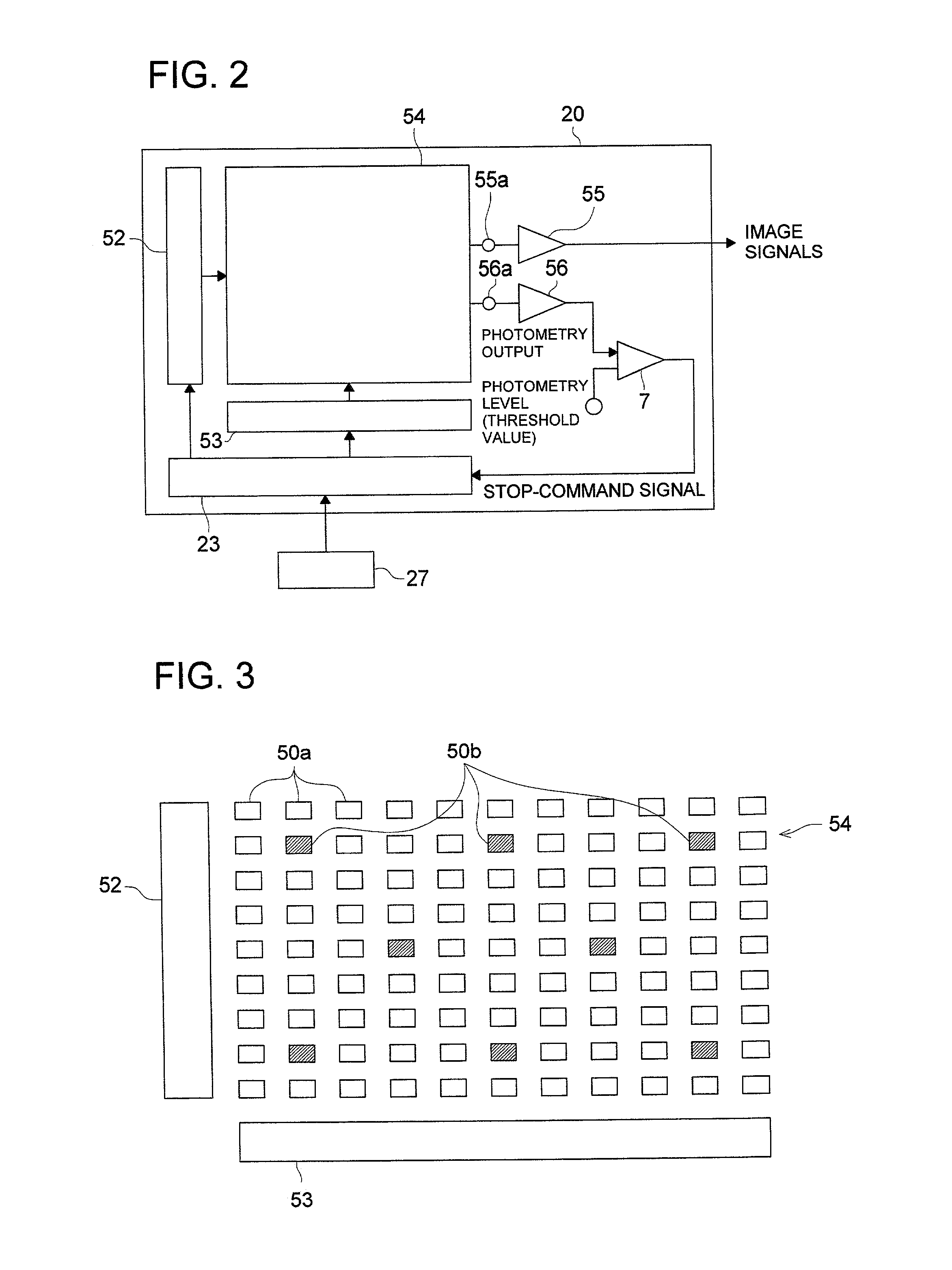Image-capturing apparatus
a technology of image capture and imager, which is applied in the direction of television system, instrument, and control of exposure, etc., can solve the problems of insufficient reflected light, inability to return, and different scenes that are actually photographed, so as to reduce power consumption and low level
- Summary
- Abstract
- Description
- Claims
- Application Information
AI Technical Summary
Benefits of technology
Problems solved by technology
Method used
Image
Examples
first embodiment
[0182]FIG. 10 shows a flowchart of operations of an electronic still camera, serving as the present invention.
[0183]The flowchart shown in FIG. 10 comprises the steps of: S101, determining whether or not power switch 25 is turned ON; S102, supplying electronic power from battery BT to MPU 27, etc., when determining that power switch 25 is turned ON in step S101; S103, determining whether or not release switch 24 is pushed; S104, simultaneously commencing photo-electronic converting actions of first group circuit cells 50a, serving as first photo-electronic converting elements for capturing an image, and second group circuit cells 50b, serving as second photo-electronic converting elements for performing a photometry, under a command signal sent from MPU 27 when determining that release switch 24 is pushed in step S103; S105, determining whether or not the exposure amount reaches to a specific light amount (a predetermined value) by means of comparator 7, wherein MPU 27 sends command...
third embodiment
[0193]Further, in the third embodiment, half mirror 60 is disposed between photographic lens 1 and image-capturing section 54 to reflect a part of the light reflected from subject 3 in a direction orthogonal to the optical axis. The part of the light coming from half mirror 60 is further reflected by Mirror 61 so as to enter into photo-sensing element 250b. With respect to the exposure controlling method using the output signal of photo-sensing element 250b, explanations are omitted since such the method is the same as that of the aforementioned embodiment.
[0194]According to the third embodiment, since a general purpose CMOS imager can be employed for image-capturing section 54 including wirings for reading out the signals, it becomes possible to reduce a manufacturing cost of the electronic still camera more than that of a conventional one. Incidentally, half mirror 60 and mirror 61 constitute an optical system.
[0195]Although the embodiments of the present invention are detailed in...
fourth embodiment
[0197]FIG. 13 shows a simplified block diagram of a configuration of an electronic still camera, serving as the image-capturing apparatus embodied in the present invention. Numeral 27 indicates a microprocessor (MPU), which determines a degree of aperture, a shutter speed, etc., and outputs command signals to the various kinds of incorporated circuits, numeral 200 indicates a strobe circuit to drive a light emitting tube mounted in strobe 2 so that strobe 2 emits the strobe light in response to a triggering command signal (a light-emission starting signal) sent from MPU 27, numeral 21 indicates a photographic lens to focus the light reflected from subject 3, numeral 22 indicates a CMOS imager shown in FIG. 13. Numeral 23 indicates an imager controlling circuit, which receives stop-command signal from comparator 7, serving as a judging section, to controls the exposure amount of CMOS imager 22. Operations of the electronic still camera, having the configuration mentioned above, will ...
PUM
 Login to View More
Login to View More Abstract
Description
Claims
Application Information
 Login to View More
Login to View More - R&D
- Intellectual Property
- Life Sciences
- Materials
- Tech Scout
- Unparalleled Data Quality
- Higher Quality Content
- 60% Fewer Hallucinations
Browse by: Latest US Patents, China's latest patents, Technical Efficacy Thesaurus, Application Domain, Technology Topic, Popular Technical Reports.
© 2025 PatSnap. All rights reserved.Legal|Privacy policy|Modern Slavery Act Transparency Statement|Sitemap|About US| Contact US: help@patsnap.com



